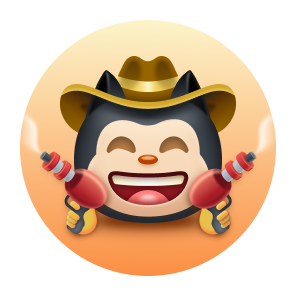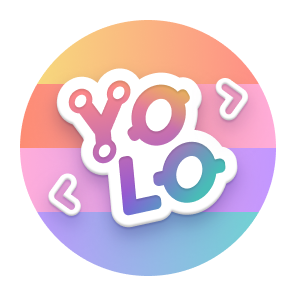Distinguished, innovative, and results-driven Software Engineer with deep expertise in distributed systems, high-performance computing, applied cryptography, and financial technology infrastructure. Renowned for tackling complex, high-stakes challenges with clean, scalable, and elegant solutions that align with business goals. A relentless advocate for code quality and engineering excellence, with a sharp focus on maintainability, performance, and industry-best patterns and practices.
website | linkedin | email | calendly
A paradigm-shift in recruitment and talent acquisition through graph-based trust networks.
From June 2024 until September 2024
Architected and built a full-stack platform using C#, ASP.NET, and Blazor. Implemented a graph-based data model with Neo4j to support complex relationship queries. Delivered a containerised system with unified frontend/backend logic and real-time graph traversal capabilities.
Enterprise distributed ledger, stablecoins, and CBDC for regulated financial markets.
From September 2021 until May 2024
Led development of enterprise blockchain and digital currency infrastructure using Kotlin, Corda, and Spring Boot. Rebuilt a stablecoin platform, contributed to the Corda 5 ledger API, and created open-source tools for state/contract testing. Architected a geo-distributed CBDC system for the UAE central bank using actor-based design.
A world-first in collateral-backed stablecoins at the dawn of the cryptocurrency revolution.
From January 2020 until September 2021
Led the transformation of a prototype into a production-ready stablecoin platform using Kotlin, Corda, and Spring Boot. Integrated DASL for enhanced token management and Ethereum interoperability. Delivered features for identity, membership, and governance with ONIXLabs libraries. Contributed full-stack with an Angular/TypeScript frontend and API-driven backend.
Revolutionising the world of trade finance with blockchain and distributed ledger technology.
From December 2016 until January 2020
Developed microservice-based trade finance solutions using C#, .NET Core, RabbitMQ, and Angular. Transitioned to blockchain engineering with Hyperledger Fabric (Go), then led a successful pivot to Corda by delivering a Kotlin-based MVP. Refactored the Corda codebase into modular, reusable components, laying the groundwork for ONIXLabs open-source libraries and extending platform capabilities across multiple trade finance products.
- Application Developer & Sitecore Lead at Monarch Airlines
- Application Developer at Boston
- Application Developer at Torex
- Application Developer at Lumesse
- I.T Support Technician at NHS
I’m the founder of ONIXLabs, an open-source initiative dedicated to building high-quality software that enhances the developer experience through clean architecture, expressive design patterns, and production-grade tooling. ONIXLabs was born out of my professional engineering work, driven by a desire to share reusable components with the broader open-source community.
The project’s origins trace back to real-world challenges encountered during enterprise projects at companies like Ivno and R3. As a result, ONIXLabs has produced robust, battle-tested libraries, including the Identity Framework and the Business Network Management System (BNMS); both of which were used in production within regulated financial platforms to manage digital identity, membership, and business network governance across distributed systems.
Aero is a comprehensive .NET platform developed under ONIXLabs, designed to serve as the architectural backbone for scalable, secure, and maintainable enterprise applications. Far more than a typical framework, Aero provides foundational infrastructure for modern development, offering production-ready building blocks for domains like identity, finance, and document workflows.
At its core, Aero follows a strict API-first design philosophy, enforcing clear modular boundaries and maintainable code through dependency injection and well-defined contracts. Its architecture embraces functional error handling for predictable control flow and integrates observability through built-in logging, telemetry, and robust configuration management. The platform promotes clean separation of concerns, especially in data access, using repository and unit-of-work patterns over Entity Framework.
Aero includes secure, pluggable serialisation (JSON, MessagePack), integration with HashiCorp Vault for secrets management, and in-memory or Vault-backed digital signing APIs. Its standout innovation is a UTXO-style cryptographic ledger; a first of its kind for .NET, tailored for centralised systems needing internal trust, immutability, and traceability. The ledger supports both a smart contract engine and a streamlined model for document lifecycle and provenance, bridging blockchain-grade integrity with enterprise practicality.
AI tools have become a valuable part of modern software engineering, supporting ideation, research, and productivity. I actively incorporate platforms like ChatGPT, Gemini, Claude, and DeepSeek into my workflow, particularly for exploratory or design-heavy tasks where rapid iteration and perspective-shifting are beneficial. Additionally, I’ve participated in early adoption of experimental platforms such as Metaphor (M6R) and Humbug, developed by former R3 leadership, which explore advanced prompt design, feedback loops, and multi-AI collaboration.
My approach to AI integration is structured and intentional. I avoid IDE-integrated AI tools, as in-line suggestions often introduce noise or disrupt complex cognitive processes. By interacting with AI outside the development environment, I maintain focus and treat assistance as an explicit, purposeful step rather than passive background automation.
Security and IP protection are also key considerations. I limit the exposure of sensitive or proprietary code to AI systems, aligning usage with ethical and contractual responsibilities. In essence, I see AI as a powerful augmentative tool, valuable when used thoughtfully, but never a substitute for sound engineering judgment or domain expertise.
Ah, that old chestnut! Highly controversial amongst the developer community, so much so that I wrote an entire website about it, and completely omitted any use of JavaScript or WebAssembly, just to prove what that you can do some quirky programming-like things with HTML and CSS alone.
Check out the great html debate.
When I worked for Monarch Airlines, I made a game based on Flappy Bird. This wasn't procrastination—the product owner asked us to build games!
As it's entirely HTML, CSS, and a mere 77 lines of JavaScript, you can play it online.





